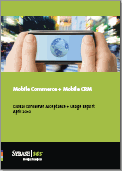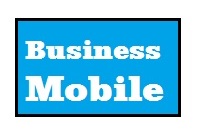 It’s hard to find many reports that give details of exactly how mobile users work and play with their phones. The Sybase 365 “Global Consumer Acceptance and Usage Report” is a worthy exception and while it was released some time ago – April 2010 – it does contain some really valuable nuggets of information.
It’s hard to find many reports that give details of exactly how mobile users work and play with their phones. The Sybase 365 “Global Consumer Acceptance and Usage Report” is a worthy exception and while it was released some time ago – April 2010 – it does contain some really valuable nuggets of information.
The survey covers the usage of 4,100 mobile phone users across sixteen key global territories, and looks at how often people use their phones, what they do with their phones and how they use the phones between the different phases in their life.
Over half of those surveyed use the same phone for both work and personal use; while one in five use one phone for work and one for personal use. In terms of phones used Nokia continues to dominate the global league for the most used mobile phone brand (41%), followed by Samsung (16%) and Sony Ericsson (13%).
Internet usage
Almost all users surveyed knew that they can access the internet or send emails from a mobile phone (over 90% in both cases) and almost half of users (48%) access the internet from their handsets at least once a week, with about the same listening to music (49%) and slightly fewer emailing (43%); 28% of users receive mobile community updates on at least a weekly basis, while 42% use IM via their phones; Using mobile phones to get sports or traffic updates is more prevalent in Asia than in Europe or the Americas; When asked to choose just three services, the most valuable were booking cinema/theatre tickets (24%), official emergency alerts (23%) and special offers/coupons (12%).
M-commerce
In the last three months, the most used service globally was paying for tickets, including cinema and theatre (22%), followed by paying for shopping and bills (19% respectively) and paying for parking (8%).
Mobile customer relationship management-related services have the greatest usage in the Asia Pacific region, with special offers/coupons (28%), official emergency alerts (20%), loyalty schemes (17%) being the most used.
Matthew Talbot, vice president mCommerce at Sybase 365, said: “One of the key challenges for adoption is to get the right person with the right service at the right price. On average, a quarter of users would purchase so-called next generation mobile services, and there is a clear opportunity for mobile to become a primary CRM channel for many services and industries.”
Worldwide trends
When comparing the regions, awareness of mobile services in the Asia Pacific region is broadly in line with worldwide trends, with the exception of slightly higher engagement with mobile banking.
Consumers are using more mobile functions than average and awareness of services is more likely to have translated into regular usage. Mobile internet is significantly more developed here (61% vs. 48% weekly usage) and texting is almost universal in the region (92% vs. 81%). Users here are twice as likely as those in either EMEA or the Americas to use mobile communities (41% vs. 20%) and more than four times as likely as those in the Americas to be getting share updates (28% v 6%).
Those in EMEA show consistently high levels of usage of mobile services, often higher than in other global regions. Consumers here lead the world in levels of awareness of watching live TV and accessing Skype from a mobile. While usage in the EMEA region is significantly lower than in other regions there is high usage of some key mobile services; 41% have accessed internet, 34% have used instant messenger, and 40% have played and stored music.
Awareness of key services in the Americas is broadly in line with worldwide averages, there are significant regional variations, with those in the USA more likely to be aware of niche services such as watching mobile TV, banking and Skype, but lagging behind the South American nations on awareness of features like texting and internet access. They are significantly less likely than average to use either SMS messaging (69% vs. 81%) or mobile internet (37% vs. 48%) on a weekly basis. One area the Americas lead in was the demand for official emergency alerts (26%) being ranked the most valuable service, closely followed by ticketing (23%).
To see the full report click here you will need to register to get the report

2 comments for “Worldwide mobile trends revealed”